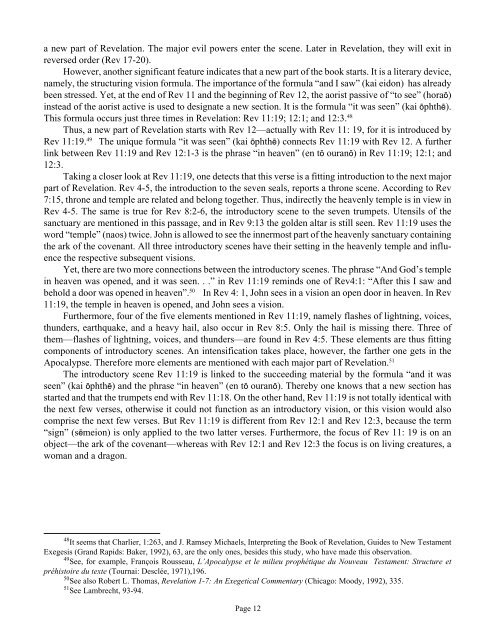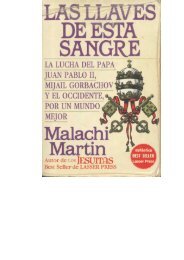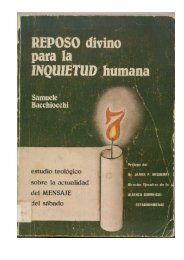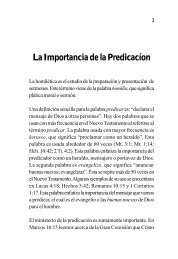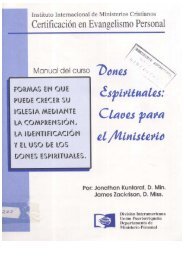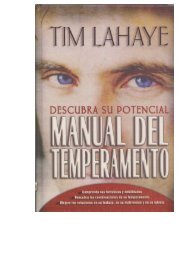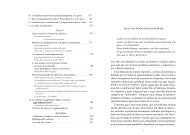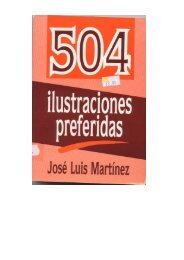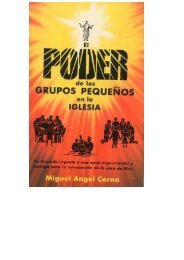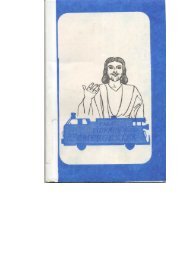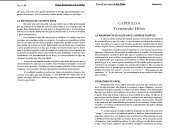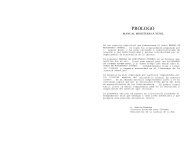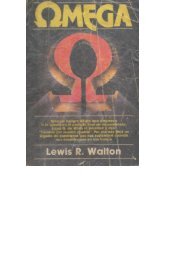Recapitulation in Revelation 4-11 - Ptr. Arturo Quintero
Recapitulation in Revelation 4-11 - Ptr. Arturo Quintero
Recapitulation in Revelation 4-11 - Ptr. Arturo Quintero
- No tags were found...
Create successful ePaper yourself
Turn your PDF publications into a flip-book with our unique Google optimized e-Paper software.
a new part of <strong>Revelation</strong>. The major evil powers enter the scene. Later <strong>in</strong> <strong>Revelation</strong>, they will exit <strong>in</strong>reversed order (Rev 17-20).However, another significant feature <strong>in</strong>dicates that a new part of the book starts. It is a literary device,namely, the structur<strong>in</strong>g vision formula. The importance of the formula “and I saw” (kai eidon) has alreadybeen stressed. Yet, at the end of Rev <strong>11</strong> and the beg<strong>in</strong>n<strong>in</strong>g of Rev 12, the aorist passive of “to see” (horaÇ)<strong>in</strong>stead of the aorist active is used to designate a new section. It is the formula “it was seen” (kai Çphth‘).This formula occurs just three times <strong>in</strong> <strong>Revelation</strong>: Rev <strong>11</strong>:19; 12:1; and 12:3. 48Thus, a new part of <strong>Revelation</strong> starts with Rev 12—actually with Rev <strong>11</strong>: 19, for it is <strong>in</strong>troduced byRev <strong>11</strong>:19. 49 The unique formula “it was seen” (kai Çphth‘) connects Rev <strong>11</strong>:19 with Rev 12. A furtherl<strong>in</strong>k between Rev <strong>11</strong>:19 and Rev 12:1-3 is the phrase “<strong>in</strong> heaven” (en tÇ ouranÇ) <strong>in</strong> Rev <strong>11</strong>:19; 12:1; and12:3.Tak<strong>in</strong>g a closer look at Rev <strong>11</strong>:19, one detects that this verse is a fitt<strong>in</strong>g <strong>in</strong>troduction to the next majorpart of <strong>Revelation</strong>. Rev 4-5, the <strong>in</strong>troduction to the seven seals, reports a throne scene. Accord<strong>in</strong>g to Rev7:15, throne and temple are related and belong together. Thus, <strong>in</strong>directly the heavenly temple is <strong>in</strong> view <strong>in</strong>Rev 4-5. The same is true for Rev 8:2-6, the <strong>in</strong>troductory scene to the seven trumpets. Utensils of thesanctuary are mentioned <strong>in</strong> this passage, and <strong>in</strong> Rev 9:13 the golden altar is still seen. Rev <strong>11</strong>:19 uses theword “temple” (naos) twice. John is allowed to see the <strong>in</strong>nermost part of the heavenly sanctuary conta<strong>in</strong><strong>in</strong>gthe ark of the covenant. All three <strong>in</strong>troductory scenes have their sett<strong>in</strong>g <strong>in</strong> the heavenly temple and <strong>in</strong>fluencethe respective subsequent visions.Yet, there are two more connections between the <strong>in</strong>troductory scenes. The phrase “And God’s temple<strong>in</strong> heaven was opened, and it was seen. . .” <strong>in</strong> Rev <strong>11</strong>:19 rem<strong>in</strong>ds one of Rev4:1: “After this I saw andbehold a door was opened <strong>in</strong> heaven”. 50 In Rev 4: 1, John sees <strong>in</strong> a vision an open door <strong>in</strong> heaven. In Rev<strong>11</strong>:19, the temple <strong>in</strong> heaven is opened, and John sees a vision.Furthermore, four of the five elements mentioned <strong>in</strong> Rev <strong>11</strong>:19, namely flashes of lightn<strong>in</strong>g, voices,thunders, earthquake, and a heavy hail, also occur <strong>in</strong> Rev 8:5. Only the hail is miss<strong>in</strong>g there. Three ofthem—flashes of lightn<strong>in</strong>g, voices, and thunders—are found <strong>in</strong> Rev 4:5. These elements are thus fitt<strong>in</strong>gcomponents of <strong>in</strong>troductory scenes. An <strong>in</strong>tensification takes place, however, the farther one gets <strong>in</strong> theApocalypse. Therefore more elements are mentioned with each major part of <strong>Revelation</strong>. 51The <strong>in</strong>troductory scene Rev <strong>11</strong>:19 is l<strong>in</strong>ked to the succeed<strong>in</strong>g material by the formula “and it wasseen” (kai Çphth‘) and the phrase “<strong>in</strong> heaven” (en tÇ ouranÇ). Thereby one knows that a new section hasstarted and that the trumpets end with Rev <strong>11</strong>:18. On the other hand, Rev <strong>11</strong>:19 is not totally identical withthe next few verses, otherwise it could not function as an <strong>in</strong>troductory vision, or this vision would alsocomprise the next few verses. But Rev <strong>11</strong>:19 is different from Rev 12:1 and Rev 12:3, because the term“sign” (s‘meion) is only applied to the two latter verses. Furthermore, the focus of Rev <strong>11</strong>: 19 is on anobject—the ark of the covenant—whereas with Rev 12:1 and Rev 12:3 the focus is on liv<strong>in</strong>g creatures, awoman and a dragon.48 It seems that Charlier, 1:263, and J. Ramsey Michaels, Interpret<strong>in</strong>g the Book of <strong>Revelation</strong>, Guides to New TestamentExegesis (Grand Rapids: Baker, 1992), 63, are the only ones, besides this study, who have made this observation.49 See, for example, François Rousseau, L’Apocalypse et le milieu prophétique du Nouveau Testament: Structure etpréhistoire du texte (Tournai: Desclée, 1971),196.50 See also Robert L. Thomas, <strong>Revelation</strong> 1-7: An Exegetical Commentary (Chicago: Moody, 1992), 335.51 See Lambrecht, 93-94.Page 12


